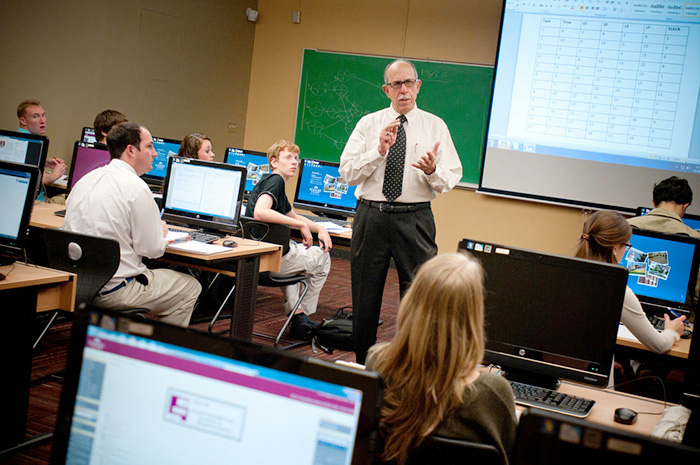Photo courtesy of Roanoke College
Digital technologies are transforming higher education for the better. While the core principles of higher education remain consistent throughout the centuries, the technological advances achieved in the past 30 years have made academia more accessible, equitable, and—certainly in terms of research and grading—productive.
Students beginning—or returning—to their campus this September have access to a wealth of information supporting what they learn in the classroom through through digital archives, course learning management systems, and interactive modules. Advances in distance education—pioneered by institutions like my own alma mater Royal Roads University—are also allowing students otherwise unable to pursue higher education, begin or continue their education this fall.
Educators are also benefitting, using technology to support and enhance their research and pedagogy. The shortening of space and time through digital technologies is a significant benefit to the establishment of international research relationships and sharing of ideas. Educators also have more resources and time to provide personalized learning to their students through online course resources and digital extensions to office hours through voice and video technology.
Grading is also gradually moving from the medium of pen and paper to screen and stylus. Through platforms like Crowdmark, a digital improvement from the physically cumbersome and finite form of paper-based grading, educators may provide more formative feedback to help their students learn more effectively. Academic institutions are also benefitting from digital grading through more secure records, grading oversights, the ability to intervene with at-risk students, and—in the case of institutions like the University of Waterloo—more physical space on campus through the removal of drop boxes and dedicated storage offices.
We’re still only scratching the surface of the impacts technology will have on higher education, and they may take decades to be fully realized. As Dr. Joshua Kim writes, even though Edison’s electrical plant was in operation by 1881 the significant industrial shift from steam to electricity did not occur until the 1920s.
Digital technology will continue to shape higher education in ways we can only currently imagine, but judging from the beneficial impacts thus far, the future looks positive.
Read more:
About the Author: Dustin is a senior account manager with DesignedUX, providing communications and marketing strategy to organizations in education and technology. Dustin is also a part-time faculty member at Centennial College and serves on the board of the Canadian Public Relations Society.
